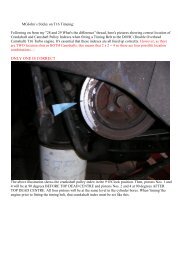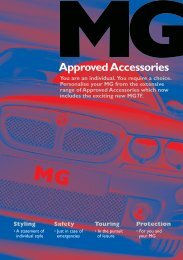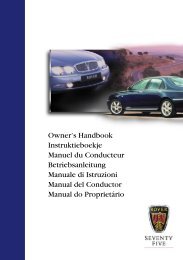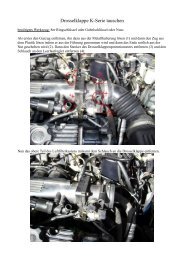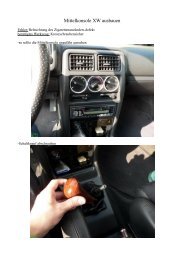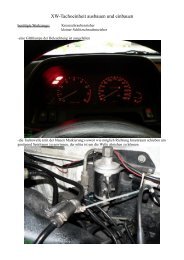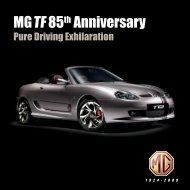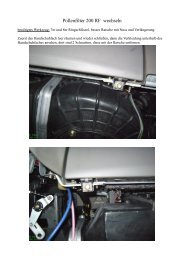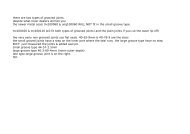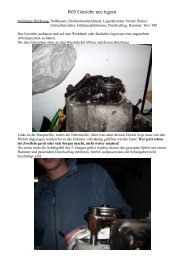The variable valve timing mechanism f ~ r the Rover K 16 engine ...
The variable valve timing mechanism f ~ r the Rover K 16 engine ...
The variable valve timing mechanism f ~ r the Rover K 16 engine ...
Create successful ePaper yourself
Turn your PDF publications into a flip-book with our unique Google optimized e-Paper software.
I I I I i'\RI \131.F \. \LL't- rlhllh(, \I1 ('II..\hISXI FOR Tt(E ROVER Klh EN(;I%E. P\RT 1<br />
12.5 1<br />
--- K 1880 BASE<br />
7-!<br />
0 2000 4000 6000 8000<br />
Engine Speed (rpm)<br />
Fig. 7 Volurncl~~~ cfliciency 2nd air consunlptian an~ilysis<br />
inlet cupeciitcs cylinder sc:ttenging and. on tlic oll~cr, <strong>the</strong><br />
J,ite closing 01' <strong>the</strong> inlet talve makes 1'1111 u\c t,f <strong>the</strong><br />
nlan~fold rat~iniinp capability. Ho\vetter. lowcl. 5pccds.<br />
e.?. 25110 r win. <strong>the</strong> volii~iietric of <strong>the</strong> VVC CI~~IIIC is 1<br />
per ccnt Ic>\ thiin th:~t of rhc base <strong>engine</strong>. tierc bllort<br />
pcriod .;ctting ol' <strong>the</strong> VVC 1s 11sed to reciiicc I>;ICL(~~W<br />
from 111~. c.>lindcr after RCIC'. but this does 1101 fully<br />
compens;~te I'or <strong>the</strong> reduced ramming velocily 111 <strong>the</strong><br />
incre:isc.d area inlet tracts.<br />
<strong>The</strong> i.5.a.c. curves In Fig. 7 show that <strong>the</strong> VVC' c~lgine<br />
makes better use 01'<strong>the</strong> air induced :tt both high a~~(l low<br />
,peed.;. At high bpceds this supplements <strong>the</strong> I I I~c;l.;t.d<br />
~~ulumrtric crtticicncy which increases b.111.e.p. Ii~r<strong>the</strong>r<br />
and at ION spec~ls compensates For <strong>the</strong> reducctl bolumetric<br />
etliciency so that <strong>the</strong> b.m.e.p. of both ~ I I ~ I Iis<br />
I C ~<br />
~tl~iiost idcntic;~l. <strong>The</strong> reduced i.s.;t.c. ot <strong>the</strong> VVC' <strong>engine</strong><br />
is <strong>the</strong> result of better combustion. This in turn allows <strong>the</strong><br />
VVC <strong>engine</strong> to run at an AFR between 0.5 and 1.0<br />
leaner at WOT than <strong>the</strong> base <strong>engine</strong> without exceeding<br />
<strong>the</strong> exhaust temperature limit for <strong>the</strong> catalyst at high<br />
speed or premature knock at low speed. Figure 8 shows<br />
that <strong>the</strong> WOT fuel consumption of <strong>the</strong> VVC <strong>engine</strong><br />
benefits from both <strong>the</strong> improved i.s.:~.c. and <strong>the</strong> leaner<br />
AFK and is lower at all speeds compared with <strong>the</strong> base<br />
<strong>engine</strong>.<br />
CONCLUSlONS<br />
-This paper has tirstly presented <strong>the</strong> practical mechanical<br />
design that was evolved to adapt <strong>the</strong> chosen system to



